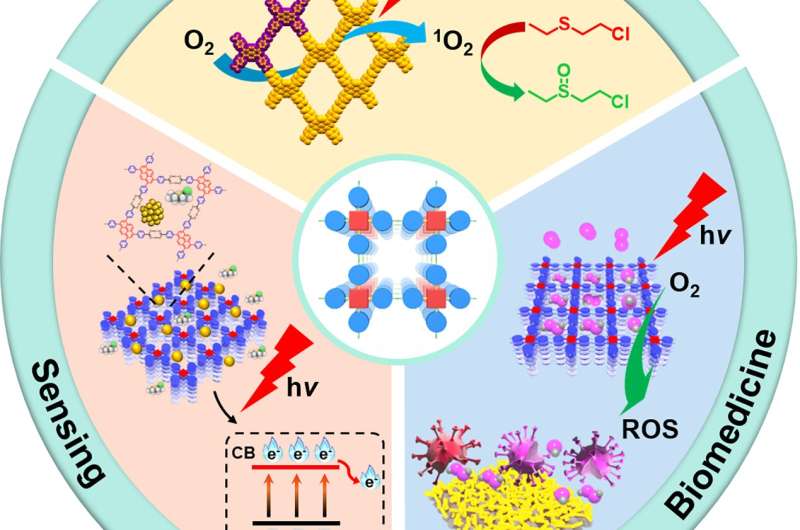Recent advancements in the development of photo- and electroactive hydrogen-bonded organic frameworks

HOFs are a class of crystalline porous materials with predictable topologies and tunable structures. They have been initially hindered by relatively weak hydrogen-bonding interactions, as many HOFs collapse upon guest solvent removal. Recently, designing constructors with large π-conjugated systems to form intermolecular shape-fitting π-π stacking interactions can greatly enhance the thermal stability of HOFs. More importantly, these HOFs with large π-conjugated structures can accelerate electron transfer when redox reactions occur due to the overlapping steric orbital interactions.
These intrinsic optoelectronic properties make HOFs an attractive and unique class of photoactive and electroactive porous materials for catalysis, sensing, and biomedical applications. Based on the shape-fitting π-π stacking strategy, various photoactive and electroactive HOFs with excellent properties have been constructed by using various ligands containing photosensitive or redox-active organic cores with hydrogen-bonding sites. Published in Science China Chemistry, this brief review summarizes recent advances in the development of optically and electroactive HOFs, including synthetic methods and various applications.
The development and application of HOFs are still in their infancy compared to mature MOFs and COFs, so there are still many challenges to overcome and potential opportunities to embrace HOFs. First, the potential of HOFs in the field of electrocatalysis remains to be exploited.
Second, although HOFs show great potential in heterogeneous catalysis, their nanoscale to microscale morphologies have not been systematically investigated. The morphology of MOF-based catalysts has been shown to be a key influencing factor in determining the catalytic performance. Due to the solution processability and adaptability of HOF, there are many opportunities to explore the effect of HOF morphology on performance.
Third, the introduction of metal nanoparticles into the nanopores of HOFs significantly broadens and enhances the possible applications of HOFs. However, the possible coordination interactions between metal ions and hydrogen-bonding sites can lead to the formation of metal-ligand complexes and affect the phase purity of HOFs. Therefore, care should be taken to avoid this situation. In conclusion, although HOFs have shown great promise as functional photoactive and electroactive materials so far, this exciting research area still needs a lot of research work to realize its full potential.
More information: Xiangyu Gao et al, Recent advancements in the development of photo- and electro-active hydrogen-bonded organic frameworks, Science China Chemistry (2022). DOI: 10.1007/s11426-022-1333-9
Provided by Science China Press




















